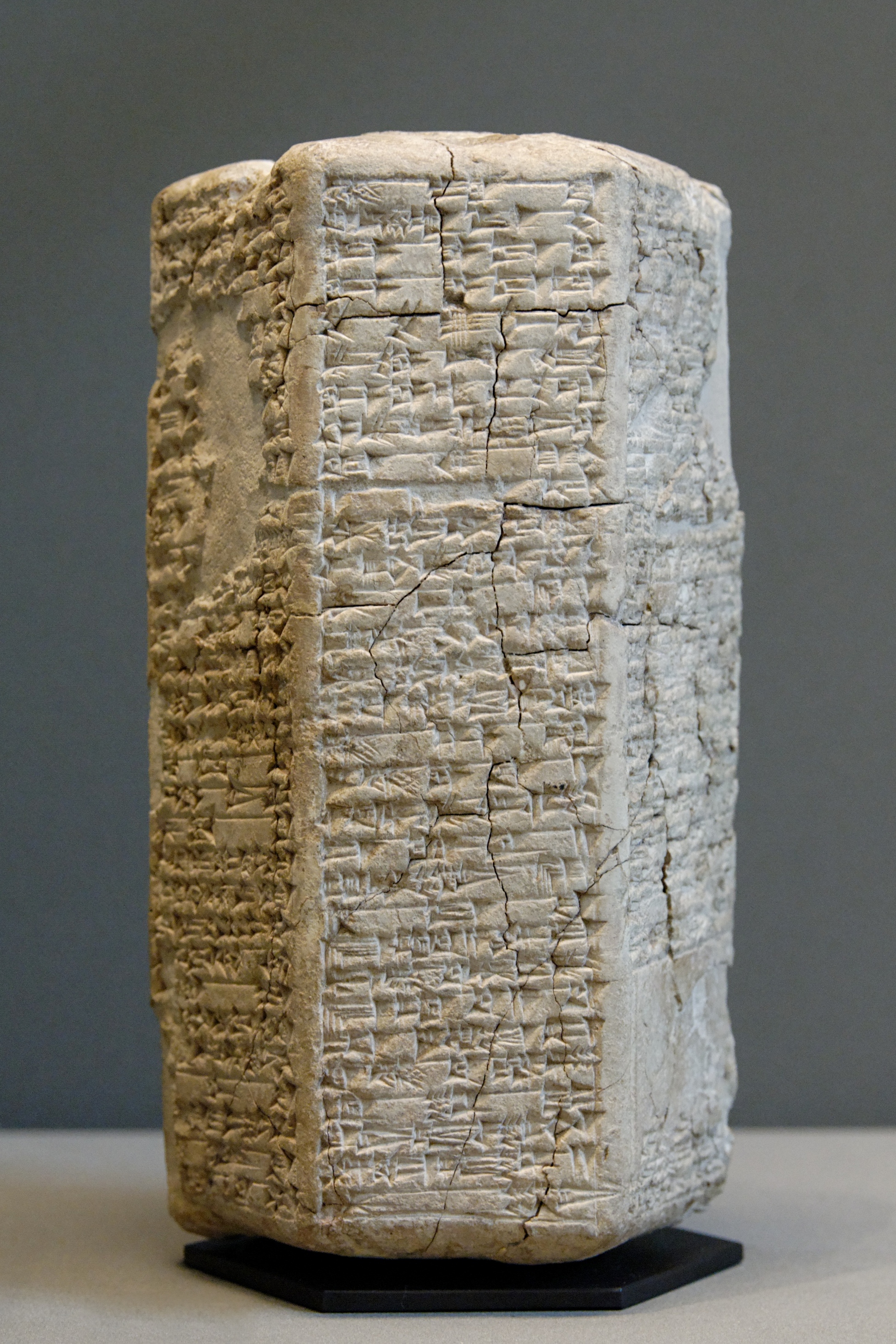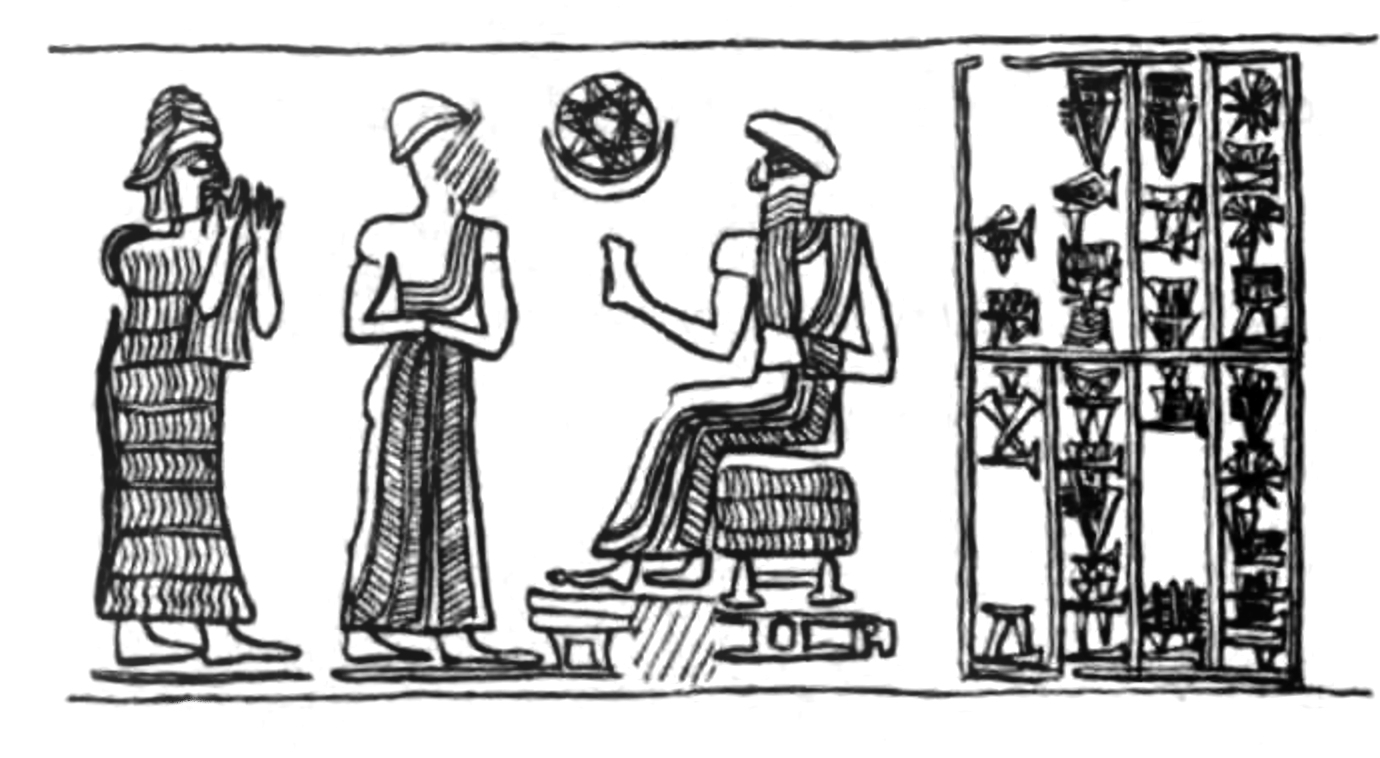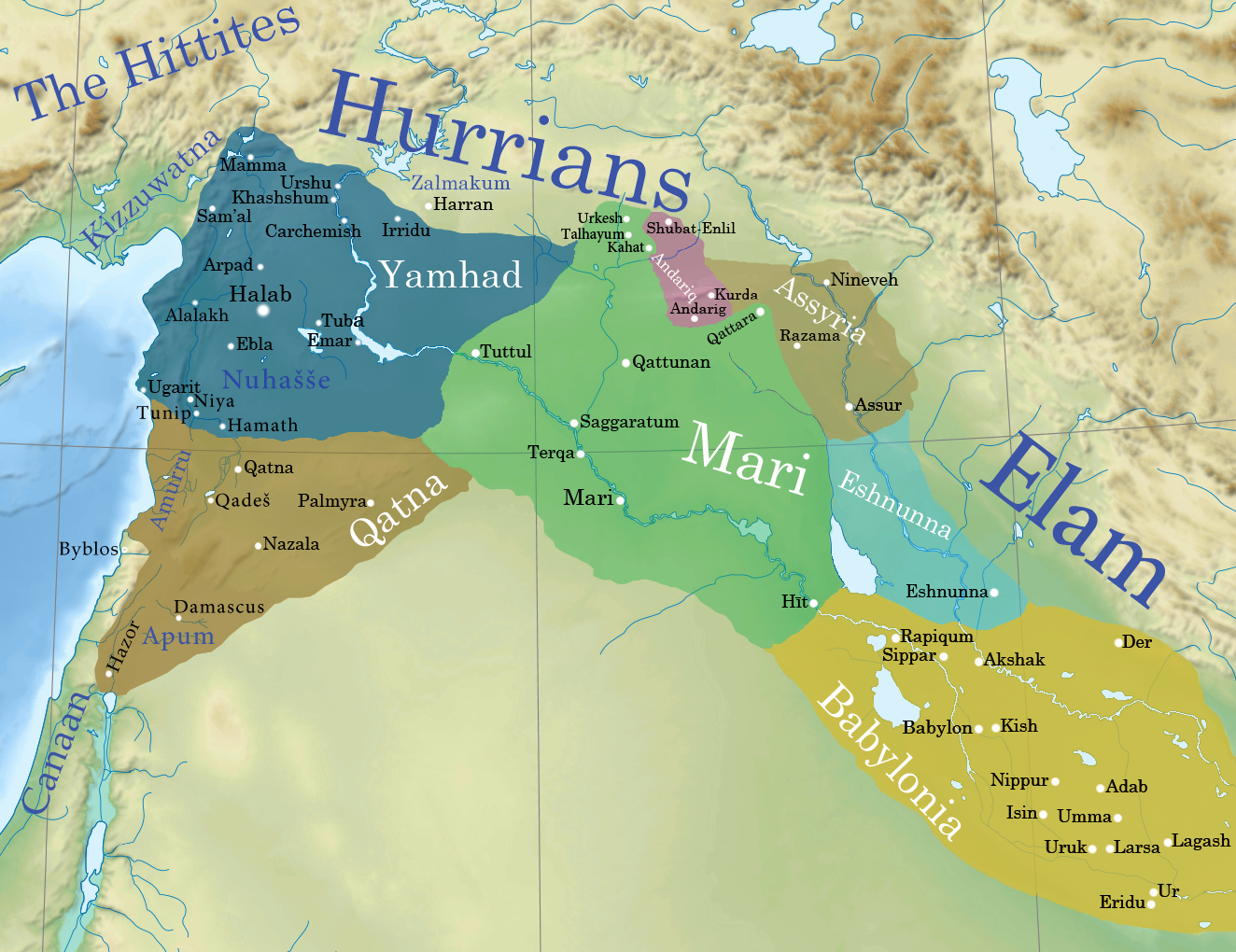|
Ishme-Dagan
Ishme-Dagan (, Diš-me- Dda-gan, ''Išme-Dagān''; c. 1953-1935 BC ( MC) was the 4th king of the First Dynasty of Isin, according to the "''Sumerian King List''" (''SKL''). Also according to the ''SKL'': he was both the son and successor of Iddin-Dagān. Lipit-Ištar then succeeded Išme-Dagān. Išme-Dagān was one of the kings to restore the Ekur. File:Stamped brick with the name of Ishme-Dagan, king of Isin, Isin-Larsa Period, from Ur, currently housed in the British Museum.jpg, Stamped brick with the name of Ishme-Dagan, king of Isin, Isin-Larsa Period, from Ur, British Museum See also * Isin * Sumer * Amorites * History of Sumer *List of Mesopotamian dynasties The history of Mesopotamia extends from the Lower Paleolithic period until the establishment of the Caliphate in the late 7th century AD, after which the region came to be known as History of Iraq, Iraq. This list covers dynasties and monarchs of ... References Amorite kings 19th-century BC S ... [...More Info...] [...Related Items...] OR: [Wikipedia] [Google] [Baidu] |
First Dynasty Of Isin
The Dynasty of Isin refers to the final ruling dynasty listed on the ''Sumerian King List'' (''SKL''). The list of the Kings of Isin with the length of their reigns, also appears on a cuneiform document listing the kings of Ur and Isin, the ''List of Reigns of Kings of Ur and Isin'' (MS 1686). The dynasty was situated within the ancient city of Isin (today known as the archaeological site of Ishan al-Bahriyat). It is believed to have flourished –1717 BCE according to the short chronology timeline of the ancient Near East. It was preceded on the ''Sumerian King List'' by the Third Dynasty of Ur. The Dynasty of Isin is often associated with the nearby and contemporary dynasty of Larsa (1961–1674 BCE), and they are often regrouped for periodization purposes under the name "Isin-Larsa period". Both dynasties were succeeded by the First Babylonian Empire. History Reign of Ishbi-Erra Ishbi-Erra (''fl.'' ''c.'' 1953—1920 BCE by the short chronology) was the founder of the Dyna ... [...More Info...] [...Related Items...] OR: [Wikipedia] [Google] [Baidu] |
King Of Isin
Isin (, modern Arabic: Ishan al-Bahriyat) is an archaeological site in Al-Qādisiyyah Governorate, Iraq which was the location of the Ancient Near East city of Isin, occupied from the late 4th millennium Uruk period up until at least the late 1st millennium BC Neo-Babylonian period. It lies about southeast of the modern city of Al Diwaniyah. The tutelary deity of Isin, dating back to at least the Early Dynastic period, was the healing goddess Gula with a major temple (, E-gal-ma) sited there as well as smaller installations for the related gods of Ninisina and Sud. Archaeology Isin is located approximately south of the ancient city of Nippur. The site covers an area of about 150 hectares with a maximum height of about 10 meters. By 1922 the site had been suggested as that of Isin. Ishan al-Bahriyat was visited by Stephen Herbert Langdon for a day to conduct a sounding, while he was excavating at Kish in 1924. He found inscribed bricks of Ishme-Dagan and Enlil-bani. Two ... [...More Info...] [...Related Items...] OR: [Wikipedia] [Google] [Baidu] |
Iddin-Dagan
Iddin-Dagan (, Di-din- D da-gan), ''fl.'' ''c.'' 1975 BC — ''c.'' 1954 BC ( MC) was the 3rd king of the dynasty of Isin. Iddin-Dagan was preceded by his father Shu-Ilishu. Išme-Dagān then succeeded Iddin-Dagan. Iddin-Dagan reigned for 21 years (according to the ''Sumerian King List''.)''Sumerian King List'' extant in 16 copies. He is best known for his participation in the sacred marriage rite and the sexually-explicit hymn that described it. Biography His titles included: “Mighty King” — “King of Isin” — “King of Ur” — “King of the Land of Sumer and Akkad.”''lugal-kala-ga'', ''lugal-i-si-in-''KI''-ga'' (''lugal-''KI''-úri-ma''), ''lugal-''KI''-en-gi-''KI''-uri-ke''4. The first year name recorded on a receipt for flour and datesTablet UM 55–21–102, University Museum, Philadelphia. reads: “Year Iddin-Dagān (was) king and (his) daughter Matum-Niatum (“the land which belongs to us”) was taken in marriage by the king of Anshan.”''mu'' d''I ... [...More Info...] [...Related Items...] OR: [Wikipedia] [Google] [Baidu] |
Isin
Isin (, modern Arabic language, Arabic: Ishan al-Bahriyat) is an archaeological site in Al-Qādisiyyah Governorate, Iraq which was the location of the Ancient Near East city of Isin, occupied from the late 4th millennium Uruk period up until at least the late 1st millennium BC Neo-Babylonian period. It lies about southeast of the modern city of Al Diwaniyah. The tutelary deity of Isin, dating back to at least the Early Dynastic Period (Mesopotamia), Early Dynastic period, was the healing goddess Gula (goddess), Gula with a major temple (, E-gal-ma) sited there as well as smaller installations for the related gods of Ninisina and Ninlil, Sud. Archaeology Isin is located approximately south of the ancient city of Nippur. The site covers an area of about 150 hectares with a maximum height of about 10 meters. By 1922 the site had been suggested as that of Isin. Ishan al-Bahriyat was visited by Stephen Herbert Langdon for a day to conduct a sounding, while he was excavating at K ... [...More Info...] [...Related Items...] OR: [Wikipedia] [Google] [Baidu] |
Lipit-Ishtar
Lipit-Ishtar ( Akkadian: ''Lipit-Ištar''; c. 1934-1924 BC ( MC) was the 5th king of the First Dynasty of Isin, according to the ''Sumerian King List'' (''SKL''). Also according to the ''SKL'': he was the successor of Išme-Dagān. Ur-Ninurta then succeeded Lipit-Ištar. Some documents and royal inscriptions from his time have survived, however, Lipit-Ištar is mostly known due to the Sumerian language hymns that were written in his honor, as well as a legal code written in his name (preceding the famed Code of Hammurabi by about 100 years)—which were used for school instruction for hundreds of years after Lipit-Ištar's death. The annals of Lipit-Ištar's reign recorded that he also repulsed the Amorites.Ferris J. Stephens, "A Newly Discovered Inscription of Libit-Ishtar", ''Journal of the American Oriental Society'', 52 (1932), pp. 182-185 See also * Isin * Sumer * Amorites The Amorites () were an ancient Northwest Semitic languages, Northwest Semitic-speaking Bron ... [...More Info...] [...Related Items...] OR: [Wikipedia] [Google] [Baidu] |
Lipit-Eshtar
Lipit-Ishtar ( Akkadian: ''Lipit-Ištar''; c. 1934-1924 BC ( MC) was the 5th king of the First Dynasty of Isin, according to the ''Sumerian King List'' (''SKL''). Also according to the ''SKL'': he was the successor of Išme-Dagān. Ur-Ninurta then succeeded Lipit-Ištar. Some documents and royal inscriptions from his time have survived, however, Lipit-Ištar is mostly known due to the Sumerian language hymns that were written in his honor, as well as a legal code written in his name (preceding the famed Code of Hammurabi by about 100 years)—which were used for school instruction for hundreds of years after Lipit-Ištar's death. The annals of Lipit-Ištar's reign recorded that he also repulsed the Amorites.Ferris J. Stephens, "A Newly Discovered Inscription of Libit-Ishtar", ''Journal of the American Oriental Society'', 52 (1932), pp. 182-185 See also * Isin * Sumer * Amorites * Cuneiform law * History of Sumer *List of Mesopotamian dynasties The history of Mesopotamia ... [...More Info...] [...Related Items...] OR: [Wikipedia] [Google] [Baidu] |
List Of Mesopotamian Dynasties
The history of Mesopotamia extends from the Lower Paleolithic period until the establishment of the Caliphate in the late 7th century AD, after which the region came to be known as History of Iraq, Iraq. This list covers dynasties and monarchs of Mesopotamia up until the fall of the Neo-Babylonian Empire in 539 BC, after which native Mesopotamian monarchs never again ruled the region. The earliest records of writing are known from the Uruk period (or "Protoliterate period") in the 4th millennium BC, with documentation of actual historical events, and the ancient history of the region, being known from the middle of the third millennium BC onwards, alongside cuneiform records written by early kings. This period, known as the Early Dynastic Period (Mesopotamia), Early Dynastic Period, is typically subdivided into three: 2900–2750 BC (ED I), 2750–2600 BC (ED II) and 2600–2350 BC (ED III), and was followed by Akkadian Empire, Akkadian (~2350–2100 BC) and Third Dynasty of Ur, Ne ... [...More Info...] [...Related Items...] OR: [Wikipedia] [Google] [Baidu] |
Sumerian King List
The ''Sumerian King List'' (abbreviated ''SKL'') or ''Chronicle of the One Monarchy'' is an ancient Composition (language), literary composition written in Sumerian language, Sumerian that was likely created and redacted to legitimize the claims to power of various city-states and kingdoms in southern Mesopotamia during the late third and early second millennium BC. It does so by repetitively listing Sumerian cities, the kings that ruled there, and the lengths of their reigns. Especially in the early part of the list, these reigns often span thousands of years. In the oldest known version, dated to the Third Dynasty of Ur, Ur III period () but probably based on Akkadian Empire, Akkadian source material, the ''SKL'' reflected a more linear transition of power from Kish (Sumer), Kish, the first city to receive kingship, to Akkad (city), Akkad. In later versions from the Old Babylonian Empire, Old Babylonian period, the list consisted of a large number of cities between which kingshi ... [...More Info...] [...Related Items...] OR: [Wikipedia] [Google] [Baidu] |
Ekur
Ekur ( ), also known as Duranki, is a Sumerian term meaning "mountain house". It is the assembly of the gods in the Garden of the gods, parallel in Greek mythology to Mount Olympus and was the most revered and sacred building of ancient Sumer. Origin and meaning There is a clear association of Ziggurats with mountain houses. Mountain houses play a certain role in Mesopotamian mythology and Assyro-Babylonian religion, associated with deities such as Anu, Enlil, Enki and Ninhursag. In the Hymn to Enlil, the Ekur is closely linked to Enlil whilst in Enlil and Ninlil it is the abode of the Annunaki, from where Enlil is banished. The fall of Ekur is described in the Lament for Ur. In mythology, the Ekur was the centre of the earth and location where heaven and earth were united. It is also known as ''Duranki'' and one of its structures is known as the Kiur' ("great place"). Enamtila has also been suggested by Piotr Michalowski to be a part of the Ekur. A hymn to Nanna ill ... [...More Info...] [...Related Items...] OR: [Wikipedia] [Google] [Baidu] |
History Of Sumer
The history of Sumer spans through the 5th to 3rd millennia BCE in southern Mesopotamia, and is taken to include the prehistoric Ubaid period, Ubaid and Uruk period, Uruk periods. Sumer was the region's earliest known civilization and ended with the downfall of the Third Dynasty of Ur around 2004 BCE. It was followed by a transitional period of Amorite states before the rise of Babylonia in the 18th century BCE. The oldest known settlement in southern Mesopotamia is Tell el-'Oueili. The Sumerians claimed that their civilization had been brought, fully formed, to the city of Eridu by their god Enki or by his advisor (or Abgallu from ''ab''=water, ''gal''=big, ''lu''=man), Adapa, Adapa U-an (the Oannes (mythology), Oannes of Berossus). The first people at Eridu brought with them the Samarra culture from northern Mesopotamia and are identified with the Ubaid period, but it is not known whether or not these were Sumerians (associated later with the Uruk period). Timeline ImageSi ... [...More Info...] [...Related Items...] OR: [Wikipedia] [Google] [Baidu] |
Amorite Kings
The Amorites () were an ancient Northwest Semitic-speaking Bronze Age people from the Levant. Initially appearing in Sumerian records c. 2500 BC, they expanded and ruled most of the Levant, Mesopotamia and parts of Egypt from the 21st century BC to the late 17th century BC. The Amorites established several prominent city-states in various locations, such as Isin, Kurda, Larsa, Mari, and Ebla, and later founded Babylon and the Old Babylonian Empire. They also founded the Fourteenth Dynasty of Egypt during the fragmented era of the Second Intermediate Period in the Nile Delta, which was characterized by rulers bearing Amorite names such as Yakbim Sekhaenre, and were likely part of the later Hyksos. The term in Akkadian and Sumerian texts refers to the Amorites, their principal deity, and an Amorite kingdom. The Amorites are mentioned in the Hebrew Bible as inhabitants of Canaan both before and after the conquest of the land under Joshua.van Seters, John, "The Terms 'Am ... [...More Info...] [...Related Items...] OR: [Wikipedia] [Google] [Baidu] |






